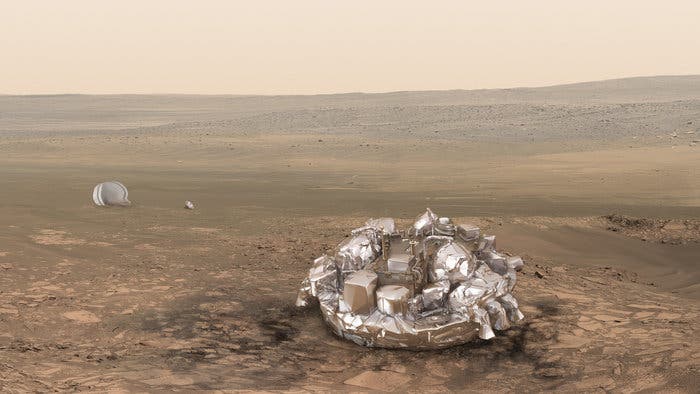The Schiaparelli spacecraft has just received its landing commands from the European Space Agency (ESA), and is expected to touch down on Mars on Oct. 19.
The ESA’s ExoMars mission is nearing its most climactic point — the touchdown. On March 14, the agency launched two connected crafts, the Trace Gas Orbiter and its Schiaparelli lander on a quest to reach the Red Planet. The two have almost completed their long trek through space, and will separate on Sunday, Oct. 16 above Mars. If everything goes well, Schiaparelli will land on the planet’s surface three days later, while the Trace Gas Orbiter will remain in orbit around it to study its atmosphere.
ESA put together a video to detail the crafts’ commands and landing procedure — basically, Schiaparelli will have to discharge the front and back aeroshells, deploy its descent sensors, braking parachutem and landing thrusters for a controlled impact on the surface. Here’s the video:
The craft will land in the Meridiani Planum, a flat region close to Mars’ equator. The lander will hit the atmosphere at about 21,000 km/h (13,000 mph), and will need to decelerate to safe landing speeds in about 6 minutes, ESA officials said in their statement. The craft’s sensors will monitor its height above the surface starting at 7 km (4 miles) altitude. When it reaches about 2 meters (6.5 feet) from it, it will hover for a moment then cut its thrusters for touchdown.
It will then start beaming up information about Mars’ winds (direction and speeds), humidity, pressure, temperatures, and so on, to the Orbiter. ESA hopes the data will help us better prepare for ExoMars’ rover mission, scheduled for 2020.










